https://issuu.com/stoningtongallery/docs/memory___light_-_joan_tenenbaum_at_
Read our new digital catalog for Joan Tenenbaum’s sumptuous new exhibit of fine art jewelry.
https://issuu.com/stoningtongallery/docs/memory___light_-_joan_tenenbaum_at_
Read our new digital catalog for Joan Tenenbaum’s sumptuous new exhibit of fine art jewelry.
The Bainbridge Island Museum of Art has opened its first exhibit devoted solely to contemporary indigenous art of the Coast, and it features some very familiar names. Over 40 works of art have been loaned by our gallery to the exhibit, and our artists’ works look amazing in BIMA’s light-filled space. “Native Hands: Indigenous Art of the Salish Sea” runs through February 2017, so don’t miss the opportunity to see this comprehensive and wide-spanning survey of contemporary Northwest art.
Featured in these photos are works by Thomas Stream, Michael Nicoll Yahgulanaas, Isabel Rorick, Raven Skyriver, Dan Friday, Robert Davidson, David R. Boxley, Lisa Telford, Joe David, Mary Lou Slaughter, John Hoover, Preston Singletary, and Larry Ahvakana. Congratulations to these artists, and others who were also included!
(All photos courtesy and copyright of the Bainbridge Island Museum of Art.)

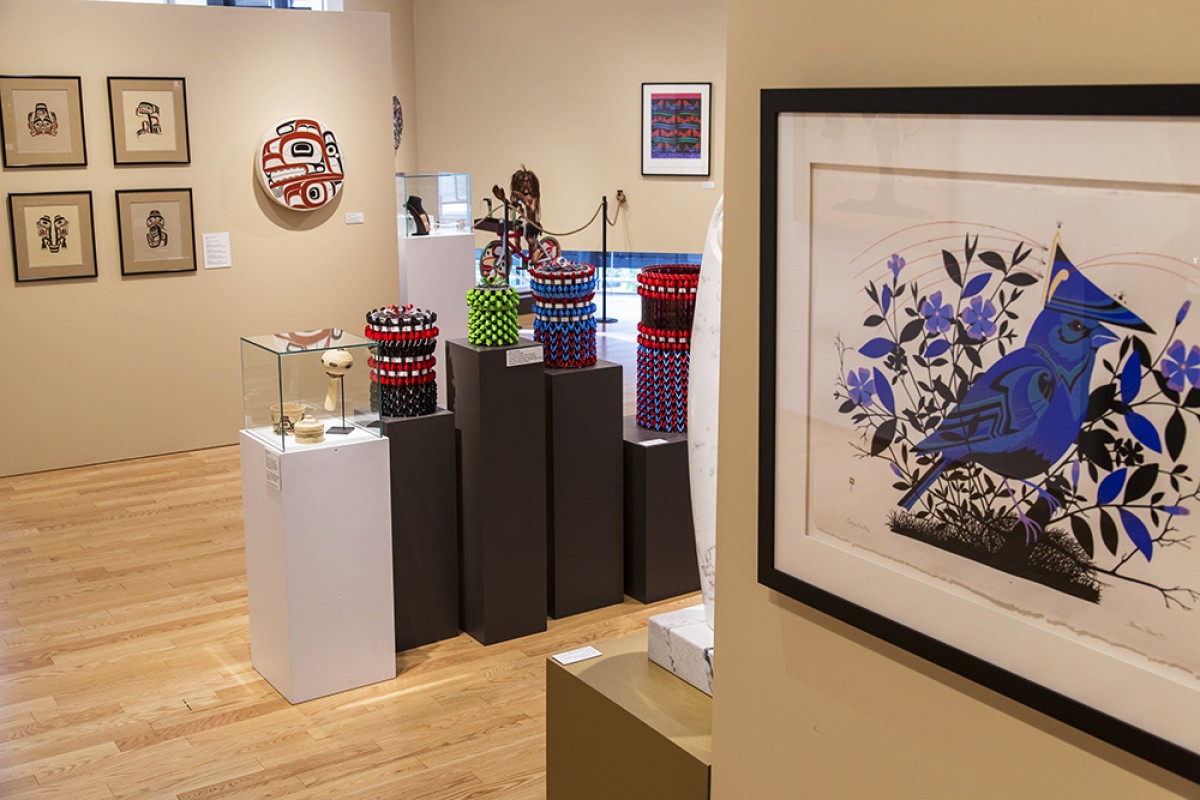
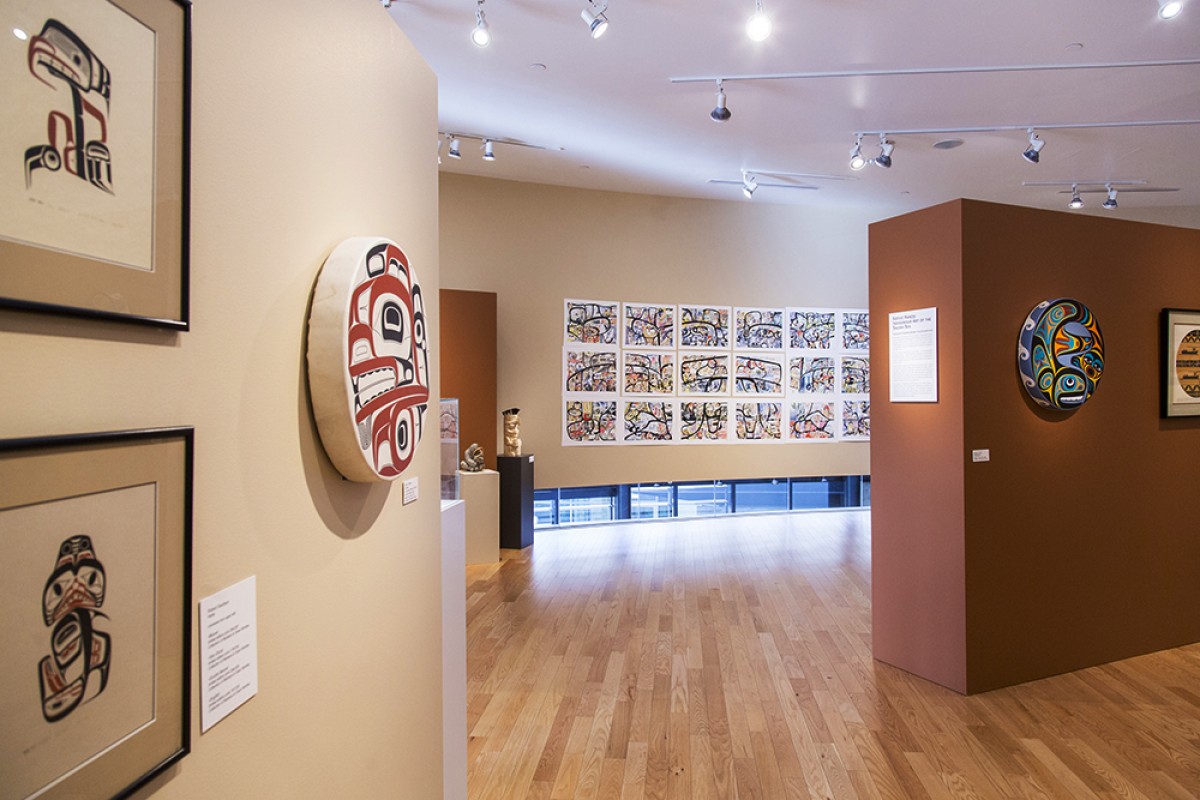
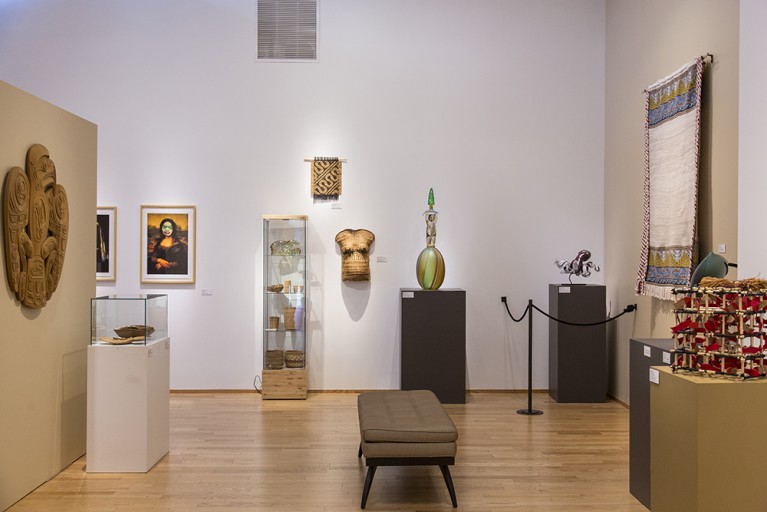
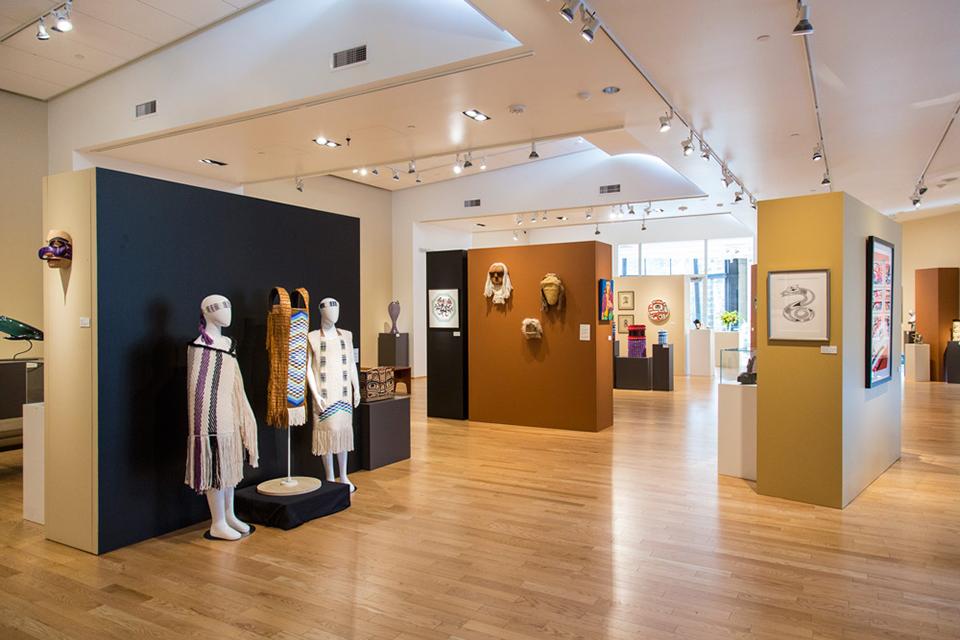
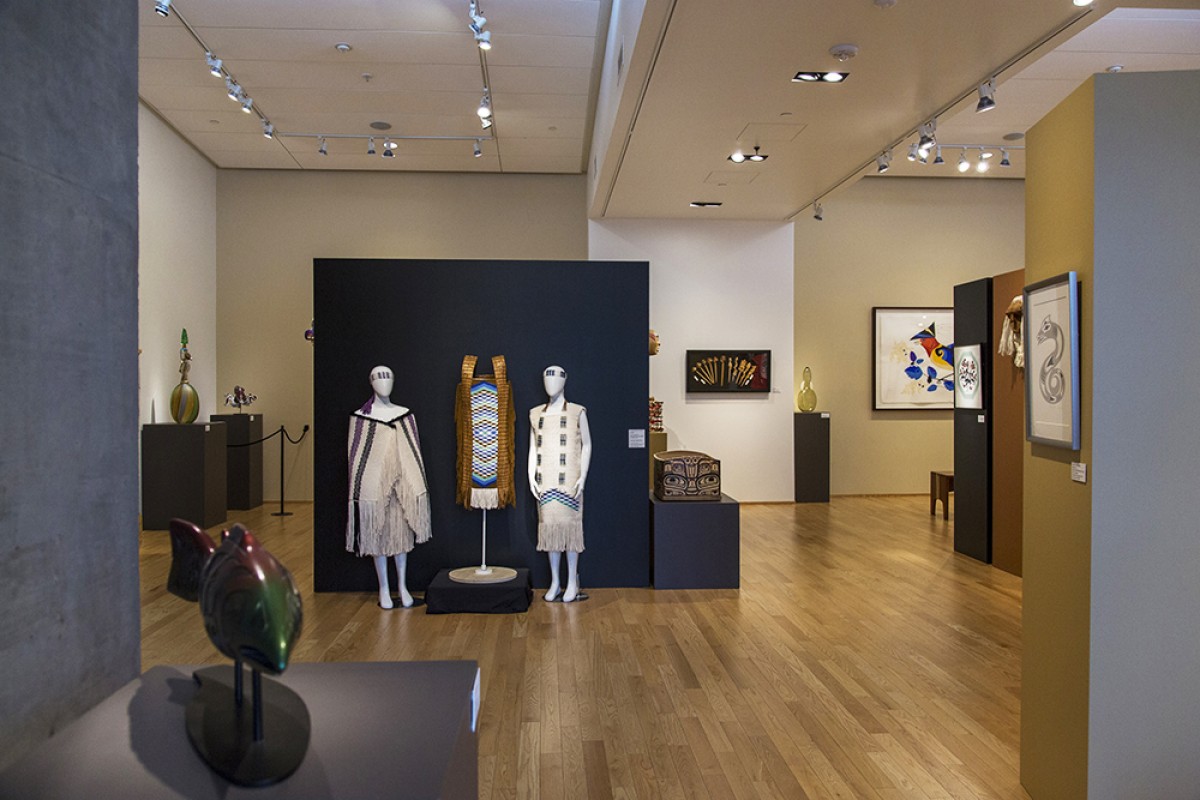
https://issuu.com/stoningtongallery/docs/isabel_and_robin_rorick_-_roots_tha
We are thrilled to present a new digital catalogue in support of the mother/son collaborative show by Isabel and Robin Rorick. This catalog is free to read (just click above) and we encourage you to share. Don’t miss the exhibition, opening this November.
We couldn’t be more excited to send you deep beneath the sea with Raven Skyriver’s new exhibition of blown glass. “Pacific” marks some new techniques for the artist, as well as a continuing exploration of organisms on the brink of extinction through the medium of exquisitely blown glass. As always, we are amazed by the excellent photos taken by ACMECreative of Raven’s work, and glad to use them in this catalog.
https://issuu.com/stoningtongallery/docs/raven_skyriver_-_pacific_-_2016
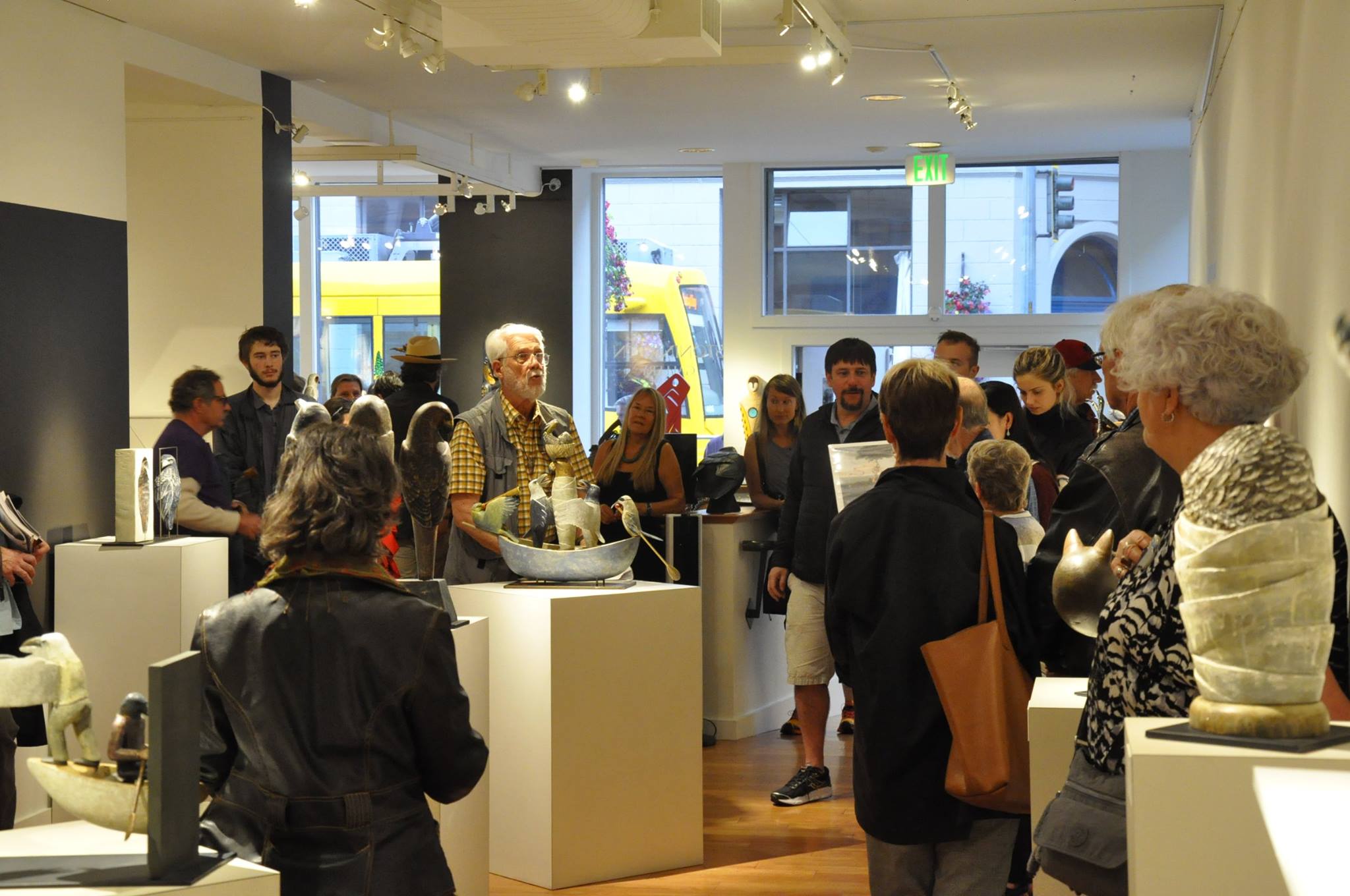
Thanks to everyone who came out to celebrate the opening of our July show, “Hib Sabin: Solo Exhibition”. Hib gave a wonderful tour of the themes of the show, highlighting the philosophical and mystical underpinnings. The exhibit is up through the end of the month, so don’t miss it.
https://issuu.com/stoningtongallery/docs/the_art_of_hib_sabin_-_catalogue
You’ve asked for it, so we’ve obliged: a catalogue of all Hib Sabin’s currently-available works. This digital catalogue features his original juniper sculptures, limited edition bronzes, and collaborative works. For those who have followed his exhibitions with Stonington for years, there will be some favorite faces here, and for those who are new to the work it will be a wealth of art to explore. It’s always a treat to work with the detail photos taken by our amazing photographer–Ashley Genevieve–and to include them in a catalogue for all to see. Enjoy!
Click above to read the catalogue, or right here: The Art of Hib Sabin.
One of the most exciting things about curating a large group exhibition is that we get to catch up with artists who live far away, or who we don’t see very often. In the run-up to the opening, we have a parade of artists bringing in their works, and it’s hard to know whether to ooh and aah over the artwork or the artists first! Here are some of the dear people we are fortunate to work with, shown with their pieces for our June “Masters of Disguise” exhibition. Don’t miss the opening this week, June 2nd.
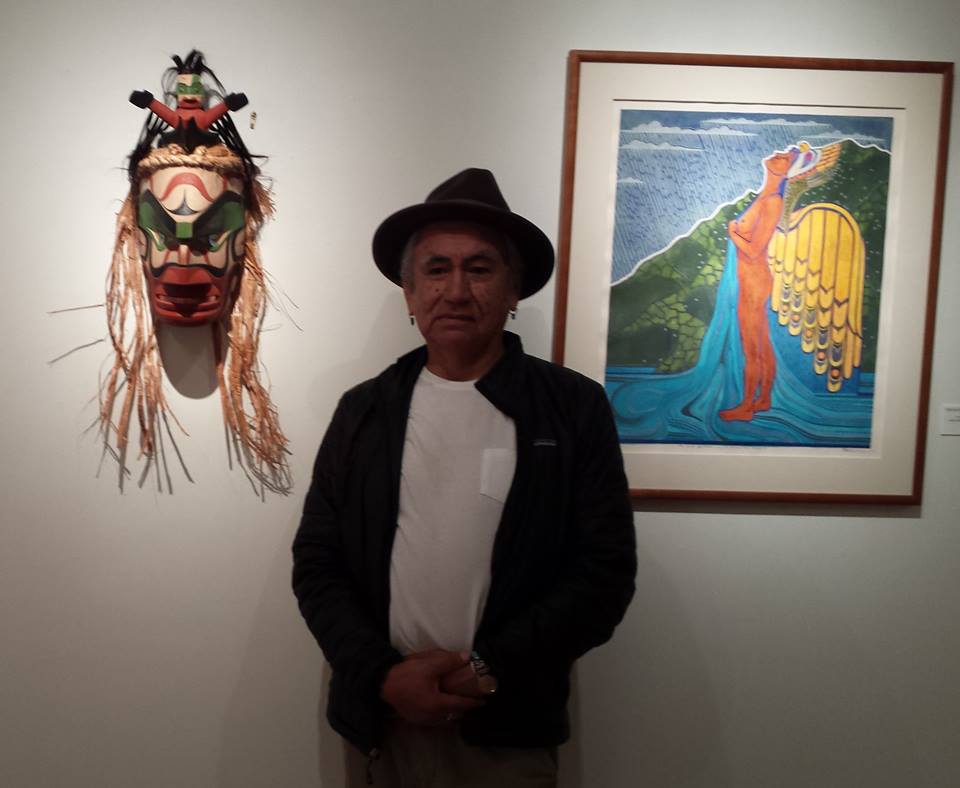
Joe David and “Ka-nowish’s Journey” mask, in memory of and in tribute to his brother, George David. (With painting by Marika Swan, Joe’s daughter.)
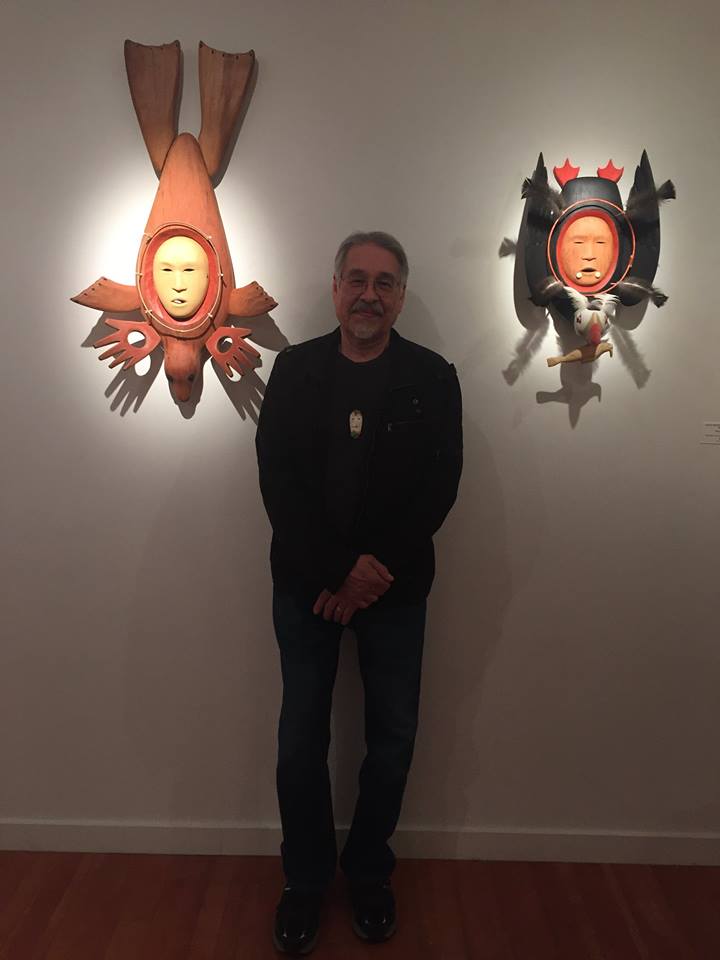
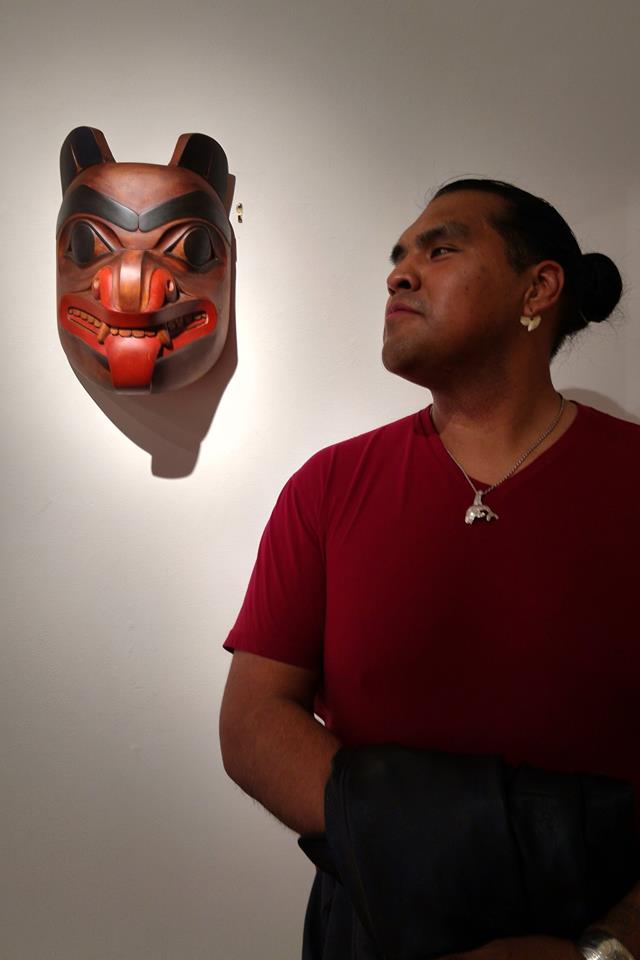
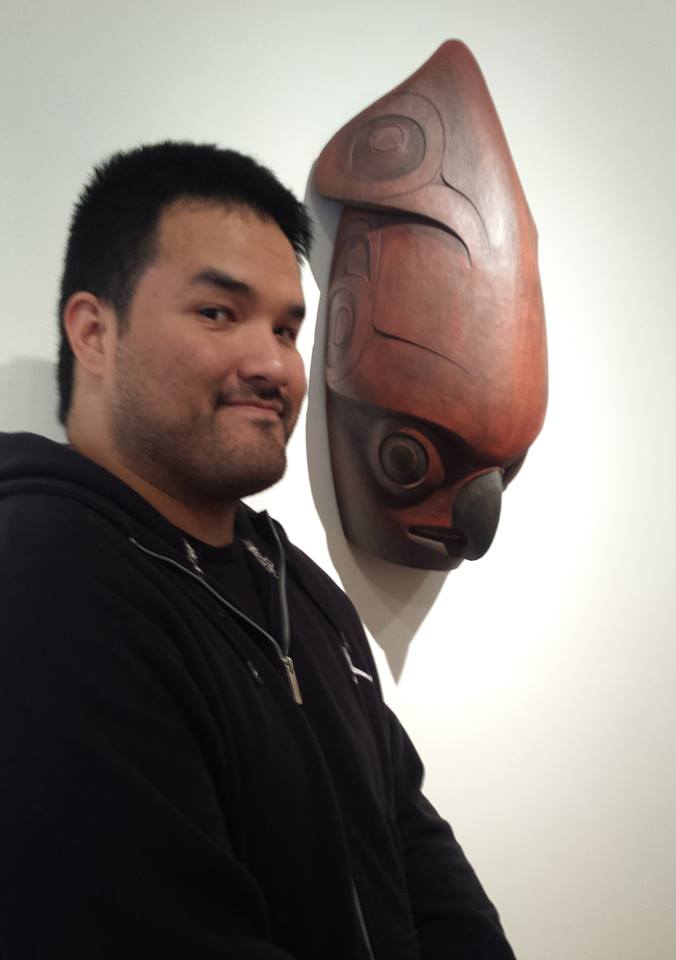
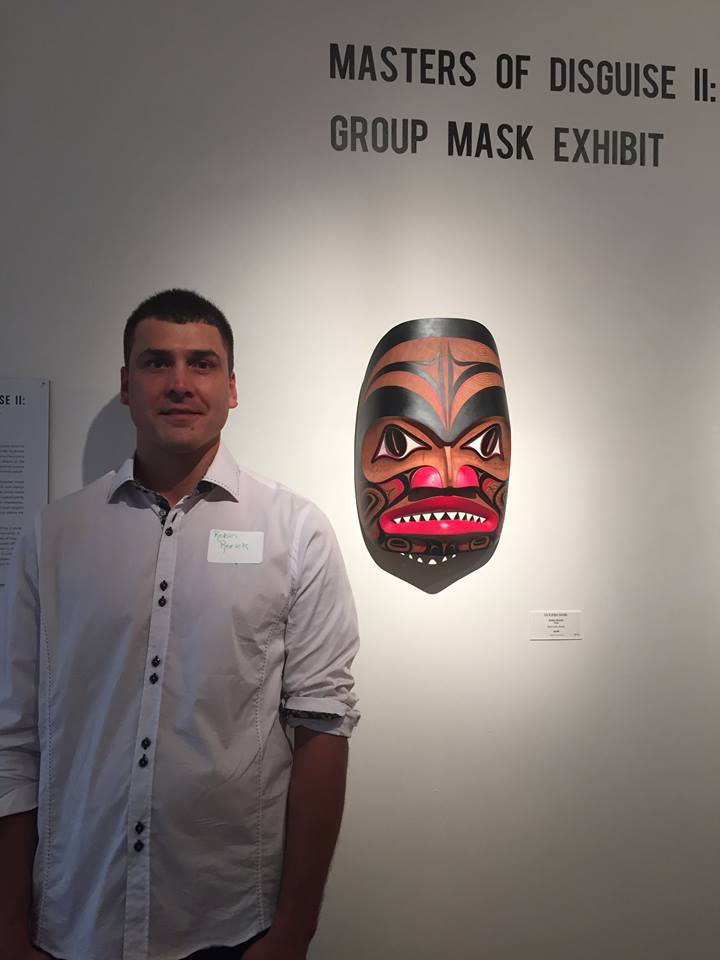
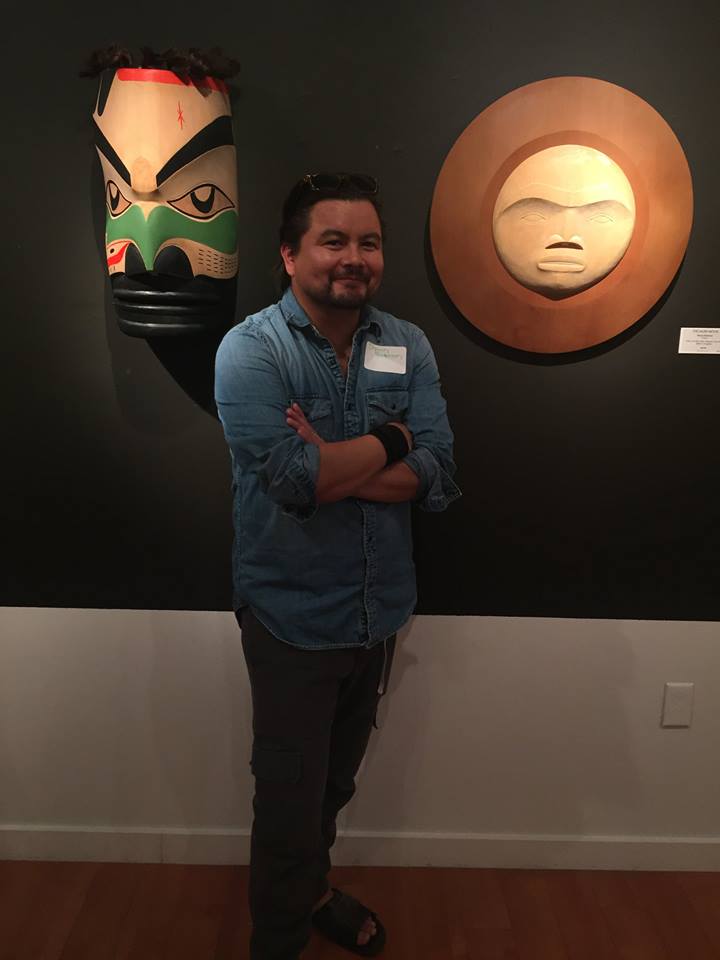
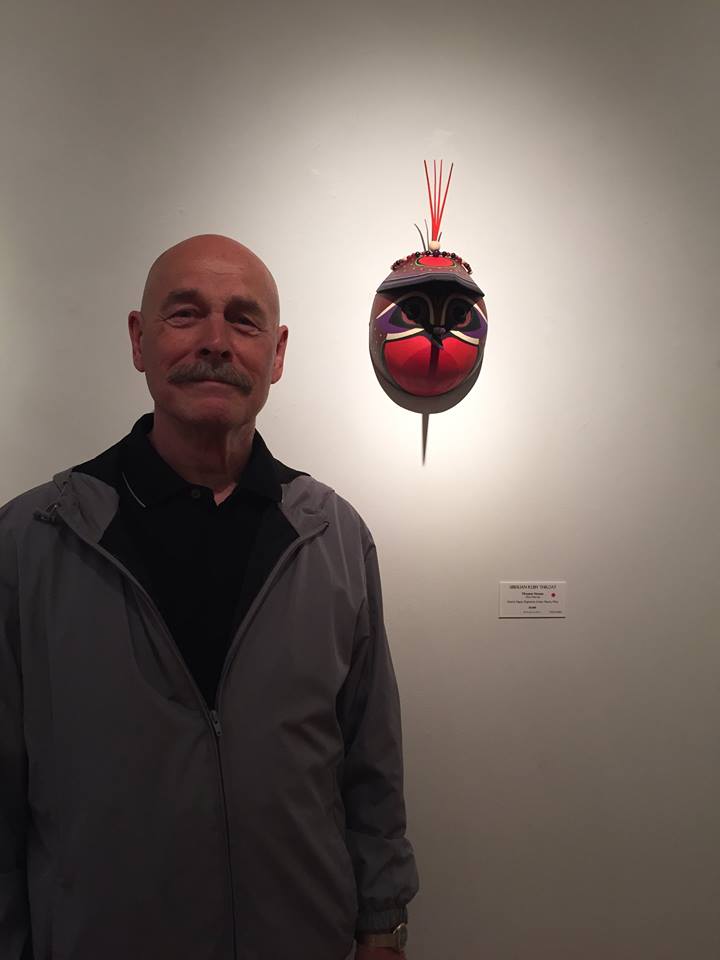
|
|
|||||||||||||||||||||||||||
|
|||||||||||||||||||||||||||

|
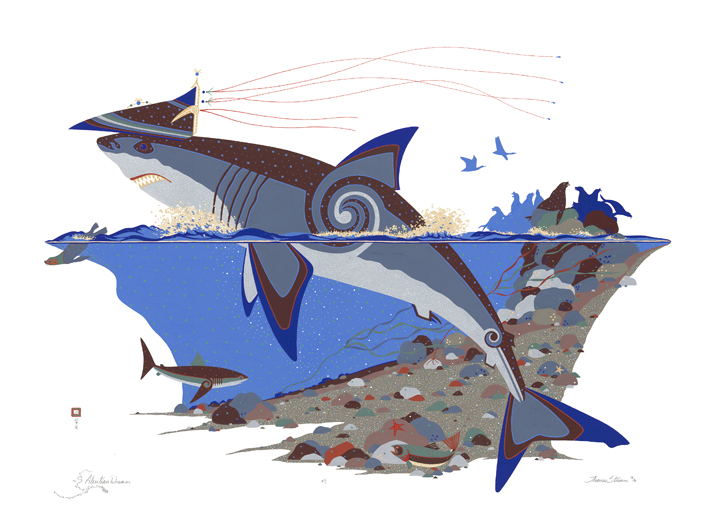
“Aleutian Dream” is the result of a client requesting that painter Thomas Stream (Sun’aq Aleut) try his hand at a creature he had never painted before; a Great White shark. The final result is dazzling, with complex composition and a dynamic sense of motion.
Thanks to everyone who came to the opening of Drew Michael’s first solo exhibition at the gallery, and to listen to his wonderful talk. The exhibit is up, selling quickly, and looking beautiful. Don’t miss this soulful show by an emerging star!
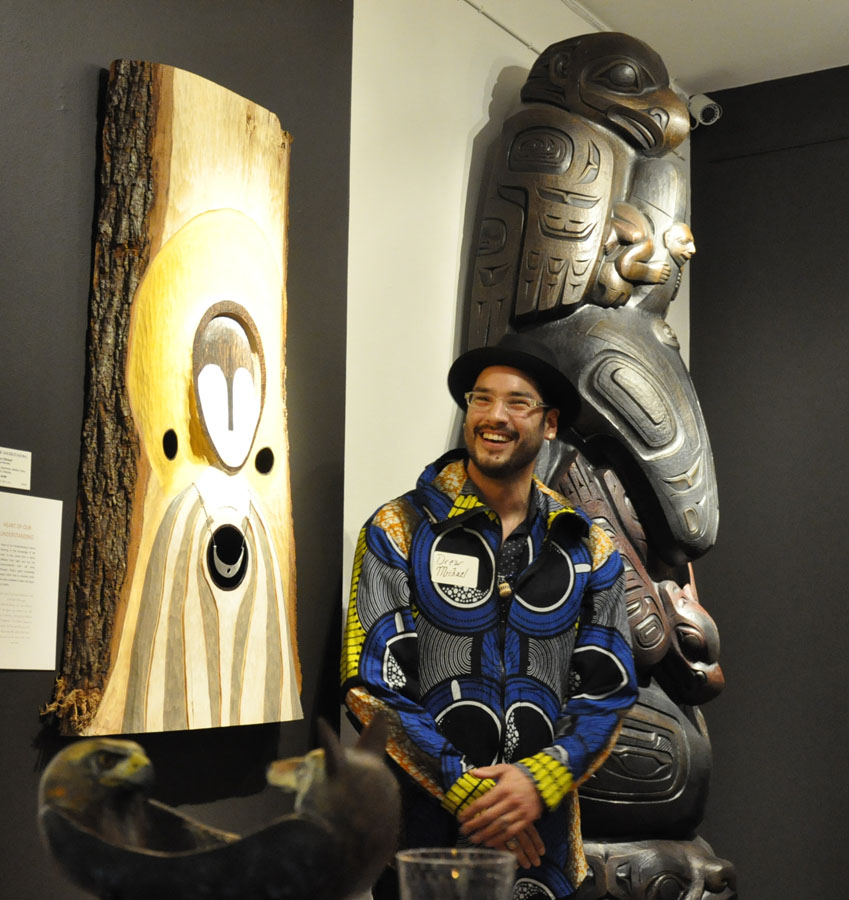
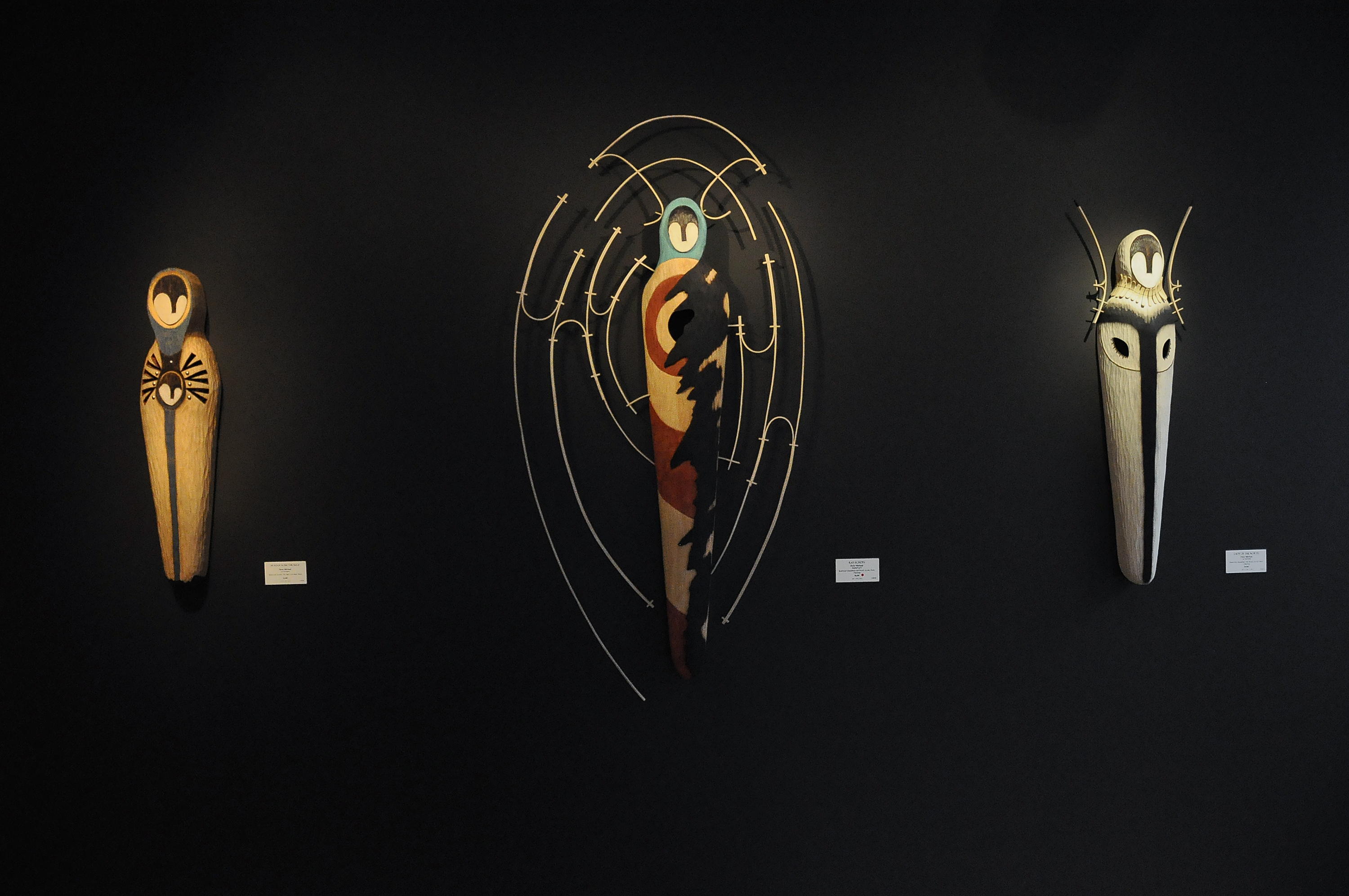
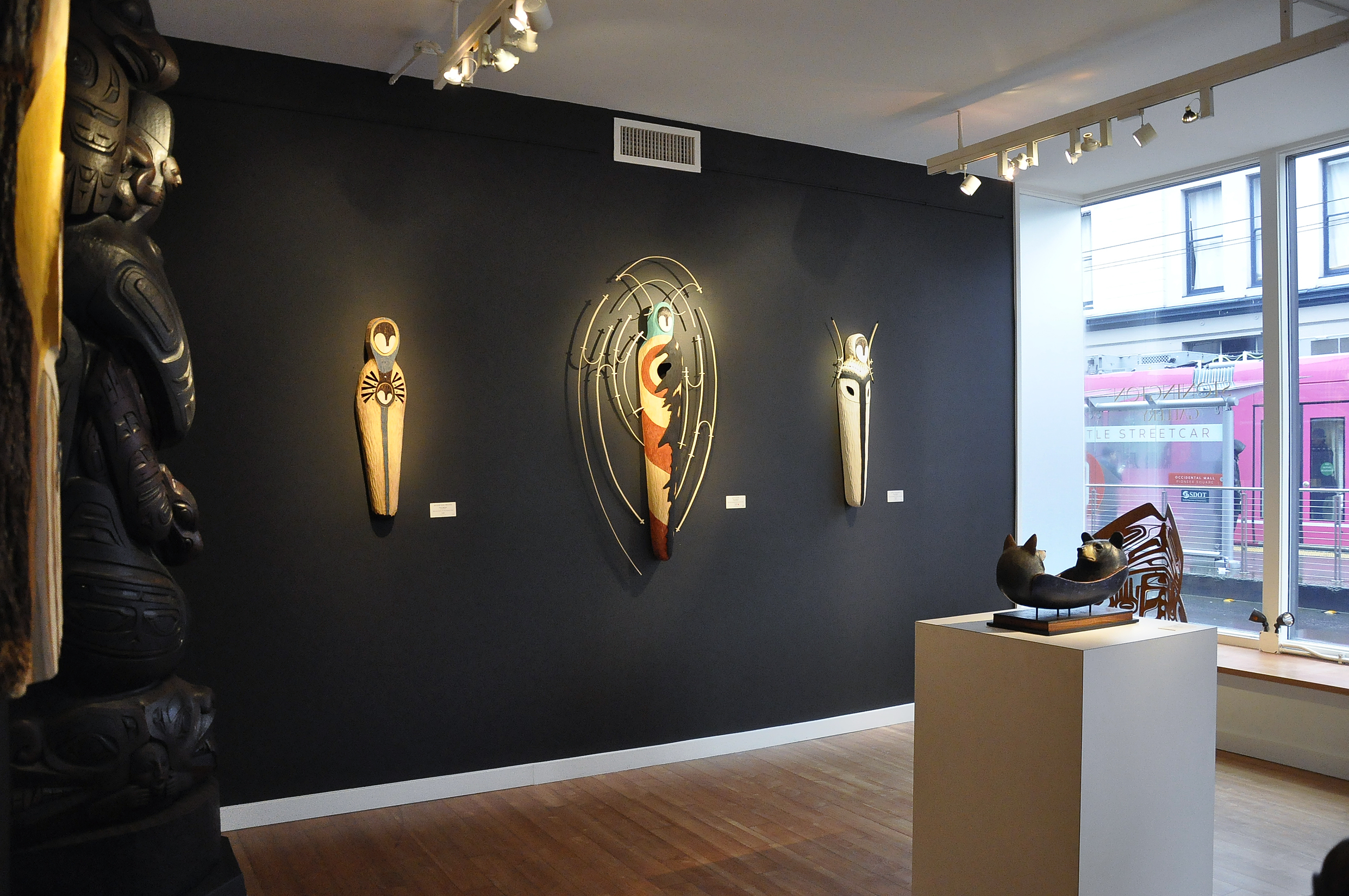
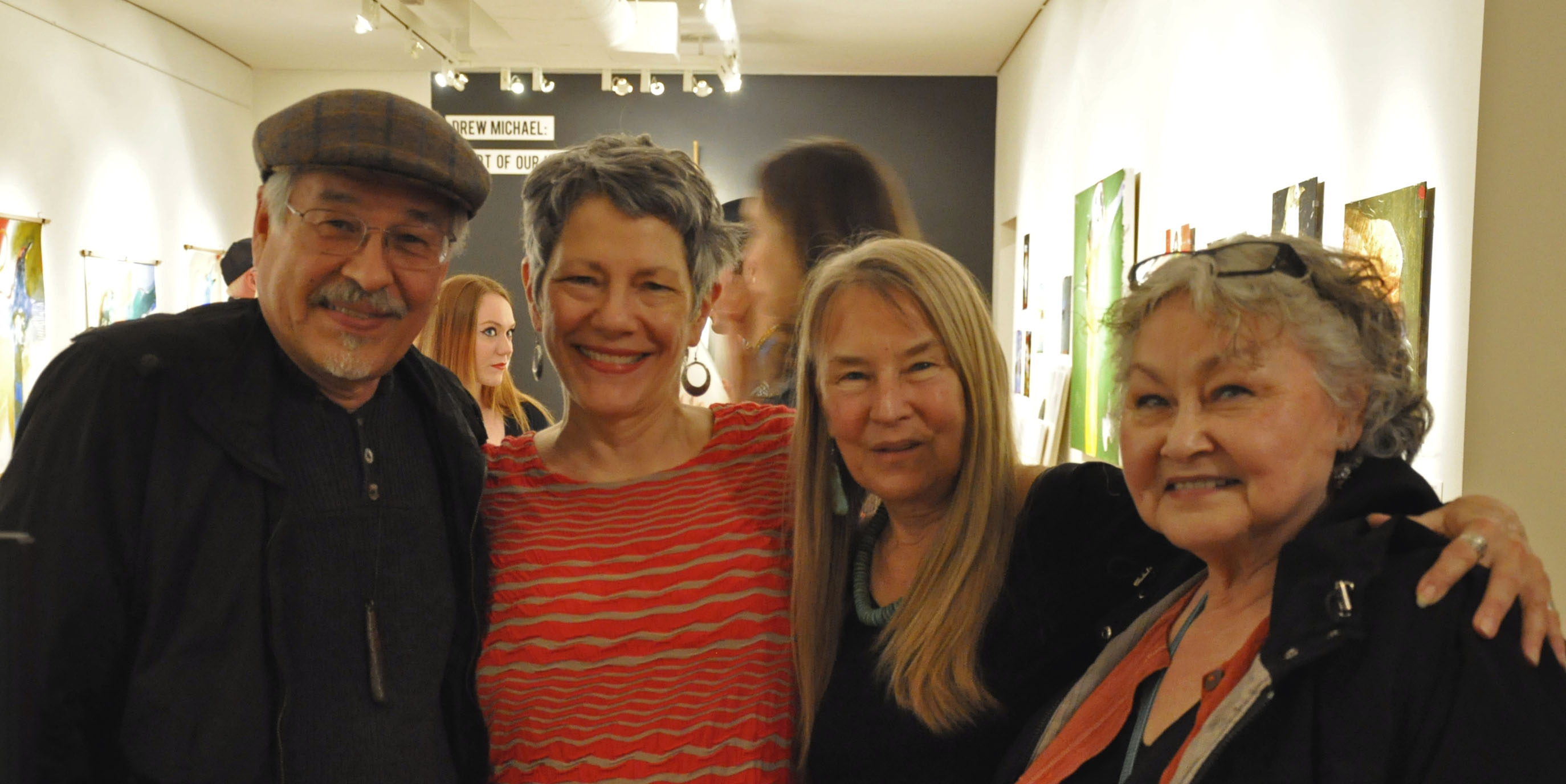
For years we have had the pleasure of seeing artist and curator Perry Eaton (Alutiiq) when he stops in to the gallery, often on the way to or from France. Eaton has been working closely with the Musée Boulogne-sur-Mer in France, which holds one of the largest collections of Alaskan indigenous art and artifacts in the world, and the largest collection of masks from Kodiak. Eaton and other Alutiiq/Suqpiaq artists have been studying this collection and working to create strong ties between the French Musée and Alaskan institutions. In 2008, a selection of the masks traveled to the Anchorage Museum as the landmark exhibit, “Giinaquq (Like a Face): Sugpiaq Masks of the Kodiak Archipelago.”
This June Eaton is returning the favor, by bringing artwork by Alaska’s best contemporary artists to the Musée as a major exhibition and will remain in the permanent collection. The exhibit will feature almost 30 artists, including Eaton, Preston Singletary, Larry Ahvakana, Thomas Stream, Allie High, Drew Michael, Clarissa Rizal, Allie High, and Alvin Amason.
In support of his first solo exhibition with our gallery, we are releasing this digital exhibition catalog of Drew Michael’s work. This is a young man who is extraordinarily gifted; a deep feeler and thinker, and wonderfully talented. We are proud to show his work this March, and to bring his vision to Seattle.
Read the catalog here:
https://issuu.com/stoningtongallery/docs/drew_michael_-_heart_of_our_underst_28f7f6e620f0e5